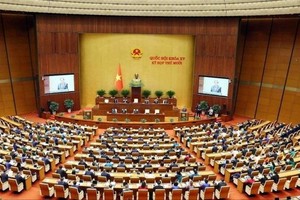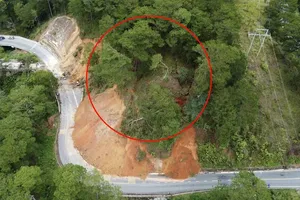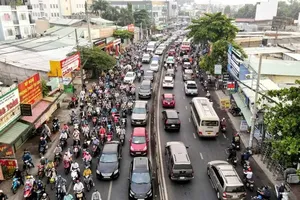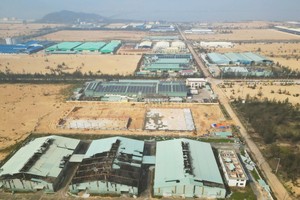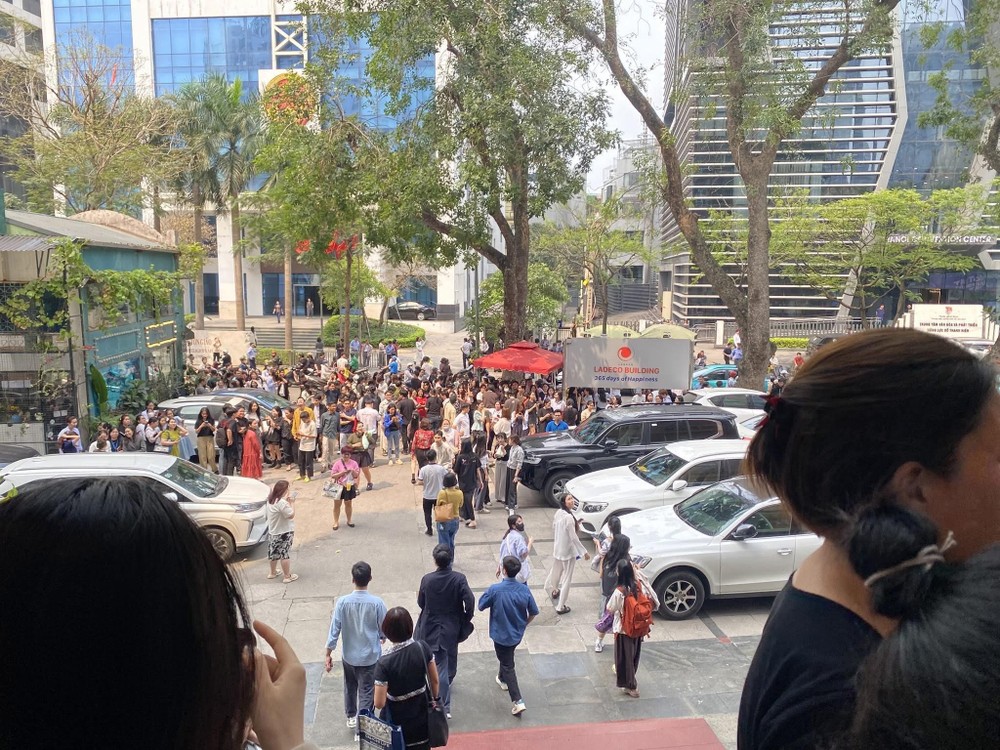
Many residents in areas like Tay Mo (Nam Tu Liem District) and various locations in Ha Dong District, especially those in high-rise buildings, reported feeling strong shaking. At the time, aluminum and glass doors rattled loudly.
In Thanh Tri District, residents in apartment buildings from the 18th and 19th floors and above also experienced similar effects, with doors inside their homes swaying visibly.
The aftershocks were felt across Hanoi, including central districts such as Hoan Kiem, Dong Da, and Hai Ba Trung, as well as suburban districts like Hoai Duc, Ha Dong, Nam Tu Liem, and Bac Tu Liem.
In central areas, many office workers in high-rise buildings rushed to evacuate after sensing the tremors. Some people reported dizziness and nausea due to the prolonged shaking. In apartment complexes, many residents panicked and quickly left their homes in search of safety.
Those on lower floors or in ground-level houses did not feel the tremors.
In Ho Chi Minh City, residents in Districts 1, 3, 7, Binh Thanh, Phu Nhuan, and Thu Duc City also reported noticeable shaking.
By around 2 p.m., the Earthquake Information and Tsunami Warning Center under the Institute of Geophysics provided details on the earthquake. It struck at 1:20:57 p.m. (Hanoi time) with a magnitude of 7.3 on the Richter scale in Myanmar. The epicenter was located at 21.71 degrees North latitude and 96.02 degrees East longitude, with a focal depth of approximately 10 km.
Due to its high intensity and proximity, aftershocks spread widely, affecting multiple areas, including Hanoi and its surroundings. However, the center assessed that the earthquake posed no direct threat to Vietnam, assigning it a disaster risk level of zero.
Authorities continue to monitor the situation, and residents are advised to stay updated with official announcements to prepare for potential aftershocks.
Seismology experts recommend having an earthquake safety plan, including a designated meeting point and a list of emergency contacts. Turning off gas, electricity, and water immediately is also crucial.
If indoors during an earthquake, taking cover under a sturdy table or bed can help avoid falling objects and provide an air pocket in case of collapse. If outdoors, it is important to stay away from buildings, trees, and bridges and move to open spaces. After the shaking stops, checking for injuries and calling for emergency assistance if needed is essential. Following guidance from disaster response agencies will help ensure safety and timely updates.
Tremors from the powerful earthquake in Myanmar were felt in Can Tho City, prompting many people to evacuate high-rise buildings on the afternoon of March 28.
At around 1:30 p.m., noticeable shaking was reported in several high-rise buildings, causing office workers on upper floors to rush downstairs. Nguyen Vu P., who was working in a building over 20 stories tall on Cach Mang Thang Tam Street in Ninh Kieu District, said many people evacuated when the tremors struck. "Some colleagues on 7th to 10th floors noticed their computer screens shaking and decided to leave. The tremors lasted about 30 seconds," he said.
Similar incidents were reported in high-rise buildings in Cai Rang District. By 2 p.m., people had returned to work as usual.
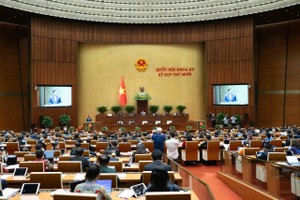

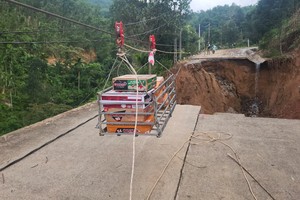
)


